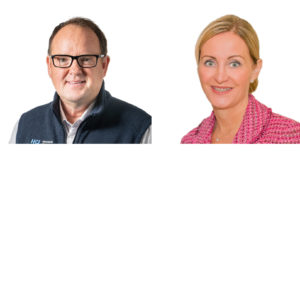Focus on Housekeeping/Maintenance
In the professional cleaning industry, Stephen Ashkin is known as the “father of green cleaning.” He and his consulting organization, The Ashkin Group, began advocating the use of environmentally preferable cleaning products nearly 20 years ago, when most in the industry believed green cleaning was, at best, a passing fancy.
Jump ahead to today and green cleaning and the use of environmentally preferable cleaning products, tools and equipment have become essentially the norm in the professional cleaning industry. Now Ashkin and others are suggesting that chemical manufacturers take a step further and fully disclose all the ingredients in both green and conventional chemical formulations. Currently this information is not required on the material safety data sheets that accompany all cleaning chemicals sold in the United States. Typically, only those ingredients that may be hazardous or cause injury, especially if handled or used improperly, are cataloged. Furthermore, it’s been discovered that even if a chemical is green certified or meets current green standards, it may still contain ingredients that could trigger negative reactions or health concerns, especially for those with weakened immune systems such as the elderly.
“The goal is simply greater transparency,” Ashkin says. “[Ingredient disclosure] would help consumers and end customers make more thoughtful decisions when it comes to chemical selection.” For the most part, full disclosure encompasses the following:
Identifying key ingredients in all cleaning chemicals*
Identifying ingredients that while environmentally preferable, may pose a health concern, especially for children and older individuals
Noting the ingredients that while effective and green, may not be suited for use in a school, medical center or long-term care facility
The disclosure concept is certainly not new. More than 700 years ago, English government officials, concerned that bakers were using a variety of undisclosed ingredients such as ground beans and peas to make bread, required that they list what was in the bread they made and sold. However, the regulation did not ban the use of alternative ingredients and, in fact, it helped lower the cost of the bread. “It simply let consumers know what was in the bread they were selecting for their families,” explains Ashkin. “Knowing what [was] in the bread helped them choose accordingly.”
* Some ingredients are used in the manufacturing process but are not in the finished product. These would not necessarily need to be listed.
WHAT ABOUT STEAM?
While some in the professional cleaning industry are advocating full disclosure programs, others are thinking even bigger by asking whether surfaces can be cleaned without the use of any chemicals.
In many cases, depending on the type of cleaning task to be performed, the answer is yes. For instance, steam cleaning systems are proving to be effective at not only cleaning surfaces but in some cases sanitizing and deodorizing them as well. This can apply to cleaning of walls, tile and grout in shower areas, restroom fixtures, counters, foodservice areas, bed frames and hard-to-reach areas. They also are designed for use when cleaning medical equipment and other sensitive detail cleaning.
Just as with full disclosure, steam cleaning is certainly not new. Legend has it that several decades ago, an Italian bartender, having difficulty cleaning glasses smeared with lipstick stains, walked over to a cappuccino machine and tried to clean them with the steam generated by the machine. The process worked-and quickly. It is believed the cappuccino machine became the model for steam cleaning systems first introduced after World War II.
HOW STEAM SYSTEMS WORK
Steam cleaning machines work by heating water to nearly 250° F. The water forms a fine mist that is released under pressure. The heat and the mist can dislodge, and in some cases destroy or liquefy, soils and contaminants that can then be wiped away.
As to killing bacteria on surfaces, studies indicate steam machines can be effective. Commercial-quality machines-equipment made for professional (commercial) use and purchased from a distributor rather than a big-box retailer-that generate high-heat steam may effectively kill bacteria, mold spores and dust mites while reducing allergens and simultaneously reducing or eliminating the need for chemicals.
Other studies have found that steam cleaning methods may remove biofilms, colonies of surface germs that form a layer protecting bacteria underneath. These biofilms are often resistant to many traditional cleaning methods and chemicals, including disinfectants. However, steam, according to some studies, can penetrate the film, making it easier to kill and remove the biofilm and the bacteria underneath.
In recent years, hotel properties have found another use for steam cleaning systems that may also prove beneficial in long-term care: eliminating bed bugs and their eggs, which minimizes the need for powerful chemicals and pesticides.
FUTURE TRENDS
Although no one is predicting the demise of cleaning chemicals, many experts in the professional cleaning industry believe the future holds more transparency regarding what is in the chemicals we use every day. They also expect more no-chemical cleaning systems and strategies to be implemented. “This is actually happening already,” says Ashkin. “And just as with green cleaning in its early stages, I expect many of these changes to be customer driven with the [cleaning] industry simply responding to the customers’ needs.”
Robert Kravitz writes for the professional cleaning, building, hotel and education industries. He can be reached at
robert@alturasolutions.com. Long-Term Living 2011 October;60(10):71-72
I Advance Senior Care is the industry-leading source for practical, in-depth, business-building, and resident care information for owners, executives, administrators, and directors of nursing at assisted living communities, skilled nursing facilities, post-acute facilities, and continuing care retirement communities. The I Advance Senior Care editorial team and industry experts provide market analysis, strategic direction, policy commentary, clinical best-practices, business management, and technology breakthroughs.
I Advance Senior Care is part of the Institute for the Advancement of Senior Care and published by Plain-English Health Care.
Related Articles
Topics: Articles , Operations











